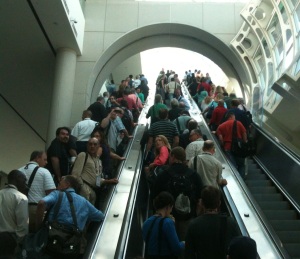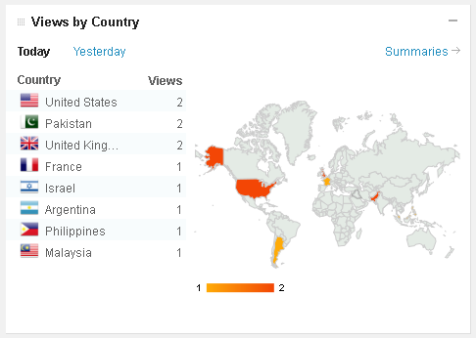Ghost Train to the Eastern Star, by Paul Theroux. Mariner Press. 2008. Paperback. $16My next door neighbors left for a two-week trip at the beginning of the summer. Their 40-ish daughter wanted to revisit the place of her birth. One can only imagine the thoughts crossing through one's mind causing someone to want to return to the scene of the crime. Their grumblings indicated a slight reticence to indulge their daughter but nonetheless the couple, who are in their late 70s by the way, loaded up their trailer and headed off to South Dakota. Plans were to visit the university where my neighbor first taught. Then, they would all tour the hospital where the daughter was born.
"And, this is the room where the doctors were screaming at your mother to push. They discarded your placenta into a dish located right about here..."
I should not poke fun. I have parallel sentiments. My family is from Kansas and Nebraska, and I spent many a summer playing in the sand along the shoulder of the street my father's parents house was located. A tiny little town in nowhere Kansas, which has become a den of meth and drug addicts today. Main Street was a 20-minute walk along a sidewalk. Along Main Street, you could visit the grocer selling out-of-date soups and canned food. The drugstore sold comic books with the covers missing. As a child, I was irritated by missing comic book covers. Later, I would understand, Frank, the druggist had cut the covers off to get credit for the unsold comics, yet then turn around and sell the comics to me, or some other kid.
As we get older and reminisce about our "Good Ol' Days" the thought of visiting our roots crosses the minds of people. The exploits of our youth, friends and adventures, appeal to us.
In the 70s a married Paul Theroux embarked upon a journey across Asia by train. Alone, with few belongings, a bag with paper, pens, and some clothes, Theroux set out to discover. Simply that: discover. He left behind a wife and the comfortable existence of life in the U.S. and western Europe for the unknown rigors of life in Asia. Along the way he met hundreds of people, friendly, cautious, yet warm and compassionate to an American stranger traveling alone.

In 2006, Paul retraced his steps. To a large extent he was successful, able to traverse a near precise path to the path forged 30+ years earlier.
Iran,
Iraq,
Afghanistan, and
Pakistan were avoided; too dangerous for a sole American to travel through, or overtly unfriendly to Americans. I suspect had appropriate travel plans been made, Paul may have been allowed to travel in Iran.
Rick Steves traveled Iran in 2007 with a government-provided companion and a set of rules to abide by. In fact, Rick's travel video of Iran is available, in full-length, via YouTube (
video).
Reading Paul is like reading someone's diary. That Paul reveals so much about himself and his surroundings makes his prose touching, intimate, and powerful. Paul is not writing to communicate the skim coat of life, the veneer of lovely places. As we all know, life is not like that.
An autobiography of sorts, too; Paul shares the demise of his first marriage, making no excuses, and asking for no forgiveness. Traveling as a young man, he perhaps made some poor choices; and his wife herself made some equally poor choices. Anyone who chooses to retrace his or her own personal history may attempt to deflect the memories of the past. Why? Is not the journey itself part of coming to terms with history? Paul essentially asks and addresses his own complicated past while engaging us in the discovery of the past, present, and future of the people along his rail journey.
Theroux is a journalist, an investigative reporter, an essayist, yet he doesn't simply report, he allows us to see his thoughts and feelings, not merely the visuals of his environment, not the droll tidbits of conversation one might have with an interview. His journeys are not the ones you will find in Lonely Planet nor Fodors.
Theroux wants to see people and cultures as they are, not as they want tourist to see them. Theroux endeavors to strip away the lovely bits of society to understand the real issues and concerns of people. When traveling through Cambodia, a state he had to bypass on his first journey, Paul writes
"It gave me the creeps to read all this while I was staying in Phnom Penh. Some of the worst killing had occurred while I was taking my Railway Bazaar trip, and then writing it, complaining that it had been impossible for me to visit Cambodia. Little did I know what was happening here - but not many people on the outside knew much, or cared."
During his Railway Bazaar trip, Pol Pot and the
Khmer Rouge were turning schools into prisons, executing fellow Cambodians with farm implements, or bashing children against trees. Water torture, not unlike that condoned by
Dick Cheney was used to extract "confessions" from innocent people who were eventually murdered and buried in mass graves. Today, open air museums allow visitors to witness the staging areas, what are today known as "killing fields."
I've thought highly of Singaporean society until reading Paul's account. While Singaporean society is fanatically clean, ordered, and disciplined, Paul paints a picture of inordinate structure and intolerance and little appreciation for humor. People are not polite and lack any incentive to be polite. Strange when contrasted with Cambodians and Vietnamese, against who major atrocities were committed yet have remained spiritual and compassionate. I've entertained notions of visiting
Singapore, an
Asian Tiger and a society whose technological achievements are equal or superior to the United States, Canada, and parts of Europe. However, Paul makes a convincing argument to visit
Cambodia or
Vietnam first and learn from people who are some of the most humble people one will ever meet.
As an American abroad, Paul ran across people who felt compelled to share their unique insight into the US involvement in Iraq, and Afghanistan. People by and large sided against the US and especially George Bush. In a few cases, the US had a few allies, places which were draconian, such as
Turkmenistan. The affinity of Turkmens with Bush does not bode well; the president of Turkmenistan was a megomaniac who renamed the months of the year after family members, renamed the days of the week after family, and commissioned giant golden statues of himself.
Theroux reunited with people he had met from his first journey and with educators he had been contemporaries with at teaching institutions. Through these conversations, we learn about the cultural changes over the 30 years. In many ways, few substantive changes had rippled through the societies. Extreme cases, such as the removal of Pol Pot had altered Cambodian society but the new government had its own repressive policies. On the other hand, Afghanistan could not be traversed and Pakistan Paul deemed as being unsafe. Daniel Pearl had recently been take hostage and Westerners were being targeted.
The more some things change, the more they remain the same.
In
Sri Lanka, Paul was granted an audience with Sir Arthur C Clarke. Sir Clarke, a British expat living on the island, is credited with inventing GPS, or at least setting forth the idea of a network of satellites which would help define location. Clarke is also reknown for his story, The Sentinel, from which his later novel, "2001: A Space Odyssey," grew. A later book, "Rendezvous with Rama," maybe produced into a movie. A sad meeting, though, as Sir Clarke was in his twilight, capable of speaking, yet incapable of really having a coherent conversation. Sir Clarke would pass away not much longer after their meeting.
The lives of people outside North America are so different from what U.S. citizens experience as to almost be alien. In fact, I would argue, their experiences are not alien, ours are. We are the odd ones out, not they. Few US citizens have to subsist on $1 a day, or have to hang out lamps to attract bugs to eat, or find alternate sources of protein and carbohydrates. The vast majority of the world operates under such conditions. A bowl of rice, or a bowl of rice noodles, portioned with some form of meat, chicken, pork, or vegetables. We can avoid witnessing poverty. We don't have to push past poor people, poor children, poor elderly who sit on sidewalks, or run up to us asking for money. Not that places in North America do not exist but back alleys where one could have sex with a child may be merely one block from the main tourist street. This is the strength of Paul's writing; he says what he thinks and communicates what he sees, and pulls no punches. He is persona non grata in Singapore due to his criticism of the government.
Ghost Train to the Eastern Star is not a pretty book; not a "Walking Tour of Britain." Chances are, you will find something offensive, but offensive in a positive way, such as those Western men who travel to Asia to avail themselves to desperate situations and people.
Ghost Train to the Eastern Star was my first Paul Theroux book. I've another cued up to read,
Dark Star Safari, an account of his travels across Africa, from Cairo to Capetown. I can't wait to read.
Pax
 In 1994, Lillehammer, Oppland, Norway hosted the Winter Olympics. You may not remember. I didn't. I had a vague recollection of the Lillehammer Olympics but if you had asked me to find Lillehammer on a map I would not be able to immediately tag the city.
In 1994, Lillehammer, Oppland, Norway hosted the Winter Olympics. You may not remember. I didn't. I had a vague recollection of the Lillehammer Olympics but if you had asked me to find Lillehammer on a map I would not be able to immediately tag the city. "Lilyhammer" is not a comedy, er, perhaps it is, in the sense of a dark comedy. What would one expect when one of the most corrupt people in New York is transplanted to one of the most honest countries in the world? An effing clash of cultures in the vernacular of a New York mafia boss is what happens.
"Lilyhammer" is not a comedy, er, perhaps it is, in the sense of a dark comedy. What would one expect when one of the most corrupt people in New York is transplanted to one of the most honest countries in the world? An effing clash of cultures in the vernacular of a New York mafia boss is what happens.










